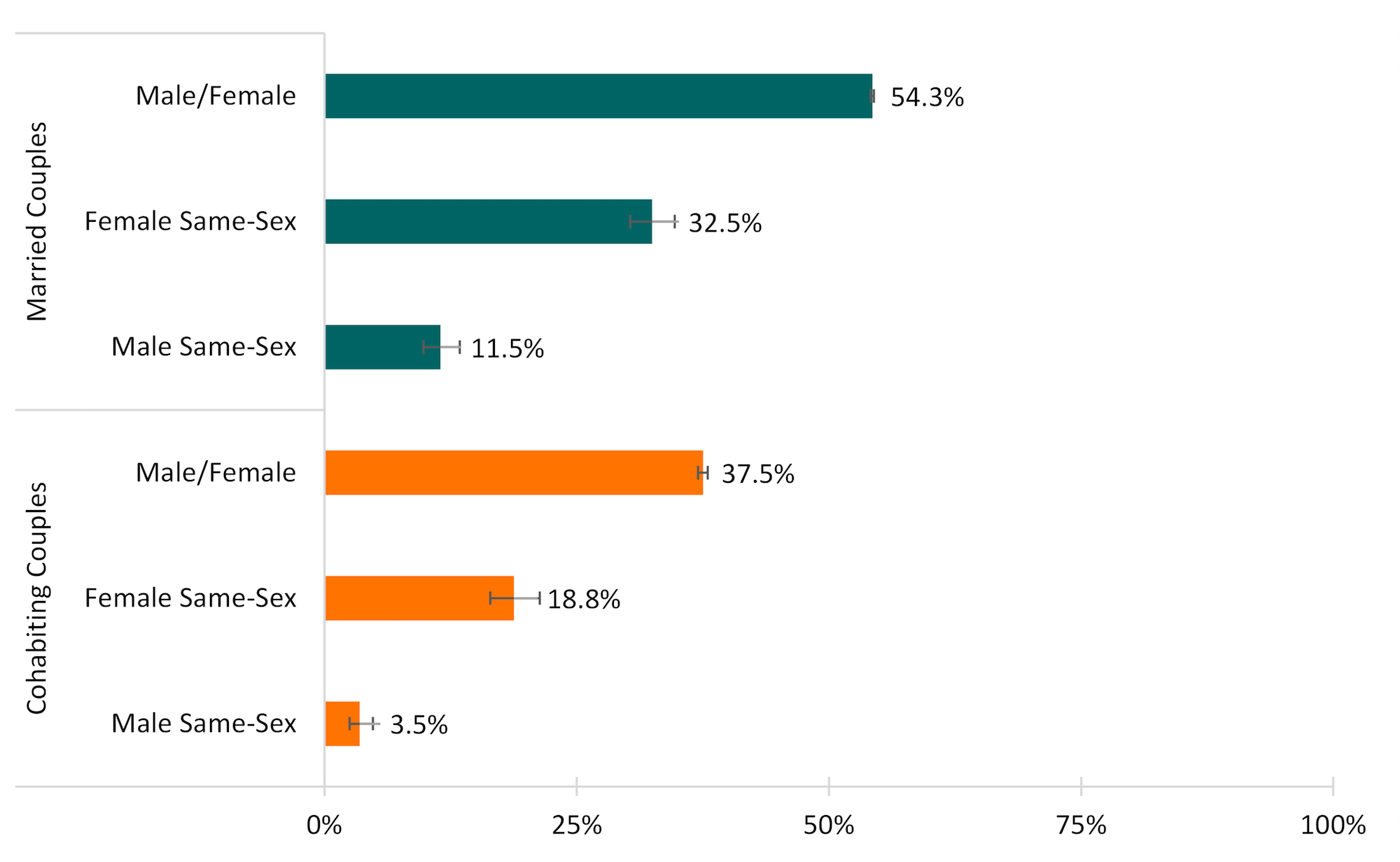Same-Sex Married and Cohabiting Couples Raising Children
Family Profile No. 8, 2021
Authors: Wendy D. Manning & Krista K. Payne
A critical role of American families is to support and raise children. This profile provides the most up-to-date evidence about the share of couples raising children, disaggregating across different-sex and same-sex couples as well as across marriage and cohabitation. Since 2015, the U.S. has ensured marriage equality by guaranteeing all couples the same legal right to marry. The U.S. Census Bureau has kept pace with these changes in marriage and modified the household roster in the 2019 American Community Survey (ACS) to directly identify same-sex couples. See ABOUT THE DATA below for details on how couple household data are collected in the ACS and how they are defined in this profile. We present a single year snapshot of the share of couples who are raising a child under age 18.
The estimates of the percentage of couples raising children varied according to the couple’s marital status as well as the sex composition of the couple. This highlights the importance of distinguishing between not only female and male same-sex couples, but also their relationship status to understand the family life of same-sex couples. These findings showcase the potentially important role of marriage for same-sex couples with children.
- Regardless of relationship status (married or cohabiting), smaller shares of same-sex couples were raising children than different-sex couples.
- Among married same-sex couples, female couples were nearly three times as likely to be raising children (32.5%) than male couples (11.5%).
- About one in five (18.8%) of female cohabiting couples were raising a child. A relatively small share of male cohabiting couples were raising a child (3.5%).
- Cohabiting different-sex couples were twice as likely to raise children than female same-sex couples, but the gap among married couples was smaller.
Figure 1. Presence of Biological, Adopted, Step, or Foster Children of the Householder Under Age 18 Among Coupled Households by Couple Type, 2019


Married couples more often were raising children than their cohabiting counterparts regardless of the sex composition of the couple.

ABOUT THE DATA
The recently released 2019 ACS includes the largest available nationally representative sample in the U.S. using a new household roster. The new roster directly identifies four couple relationship categories in the following order:
“opposite-sex husband/wife/spouse”
“same-sex husband/wife/spouse”
“opposite-sex partner”
“same-sex partner”
In this profile, we use the same terminology, sex rather than gender, as was used in the survey. Based on their responses, we classified couples into the following six categories:
male/female married couples
female married couples
male married couples
male/female cohabiting couples
female cohabiting couples
male cohabiting couples
Couples were coded as raising a child if the roster indicated the householder was living with a biological, adopted, step, or foster child under the age of 18. Focusing on couples in their prime ages for raising children, the sample was limited to couples with a member under age 60. The results were weighted following the ACS guidelines, and we present confidence intervals in the Figure.
Suggested Citation
- Manning, W. D. & Payne, K. K. (2021). Same-sex married and cohabiting couples raising children. Family Profiles, FP-21-08. Bowling Green, OH: National Center for Family & Marriage Research. https://doi.org/10.25035/ncfmr/fp-21-08


This project is supported with assistance from Bowling Green State University. From 2007 to 2013, support was also provided by the U.S. Department of Health and Human Services, Office of the Assistant Secretary for Planning and Evaluation. The opinions and conclusions expressed herein are solely those of the author(s) and should not be construed as representing the opinions or policy of any agency of the state or federal government.
Updated: 07/26/2021 08:51AM

